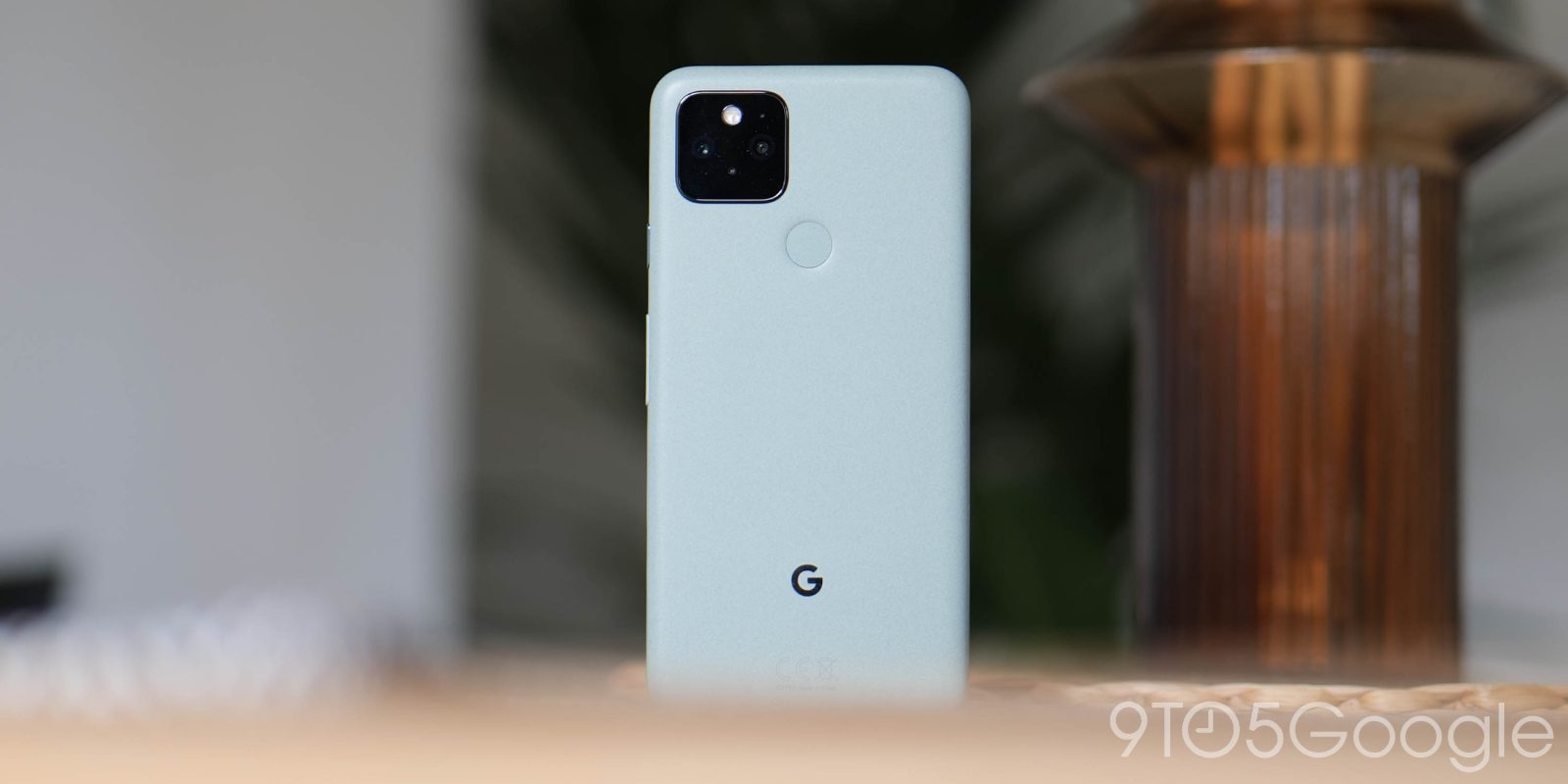
For better or worse, the Pixel 5 is not like previous flagship Google smartphones. It’s a very different proposition for buyers as a result — but is it actually a good device?
The Pixel series has often be pointed to as the “pinnacle” of Android since the first device hit shelves back in 2016. An outright flagship device, designed and delivered by Google as it intended. Despite trying to take on Apple directly, the Pixel series has faltered a little over four years, which Google has decided was a sign to change tactics.
Gone is the flagship price structure and, therefore, some features. In comes a more modest set of specifications and a more honed software approach. If the Pixel series relied on software before, with the Pixel 5, it’s arguably the only component to catch attention.
One huge question surrounding the entire launch is if this was or would be a sensible decision. With that in mind, this is our review of the Google Pixel 5.
Hardware
Small but still approachable
Saying that a smartphone at 6-inches is small feels like a massive contradiction but based upon the rest of the market, the Google Pixel 5 feels really “dinky” and compact. Part of that is down to the expert use of bezels and no “forehead” this year that houses all kinds of Face Unlock tech but the lack of an “XL” variant is one that further pushes the small phone agenda.
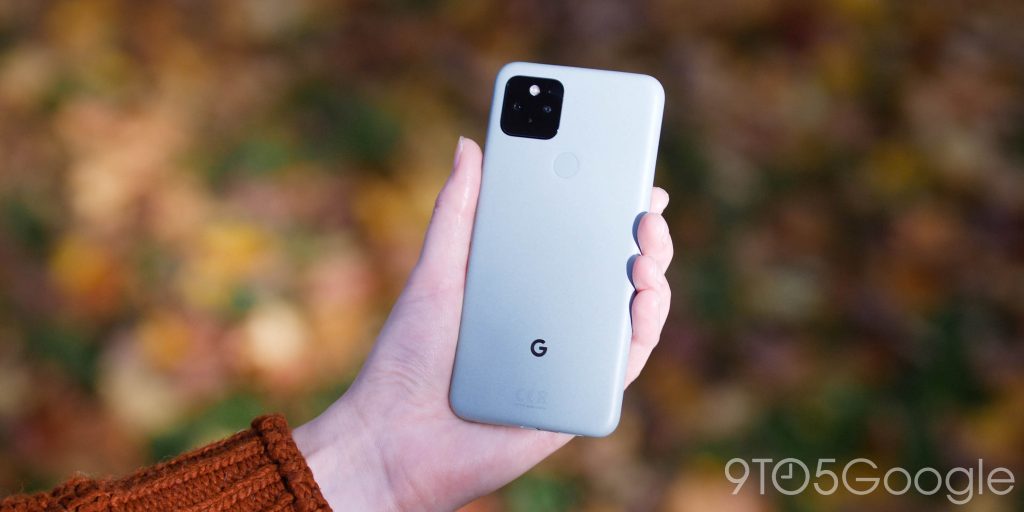

I will say that when in a case, I do find the Pixel 5 hard to fully distinguish from the Pixel 4a. Thankfully, the added weight is one of the few areas where they do majorly differ. Obviously, without a case, I think it’s easy to tell right away that the Pixel 5 has a more “premium” feel — whatever that actually means.
The lack of a colorful power button is disappointing as it was always a playful addition, although the Sorta Sage green color still manages to provide that usual Google “character.” The side buttons are clicky and precise too. Think of the Pixel 5 hardware as a hybrid of older designs with a hint of a bezel-free future. It still feels like a Pixel but maybe not in the way you expect it to.
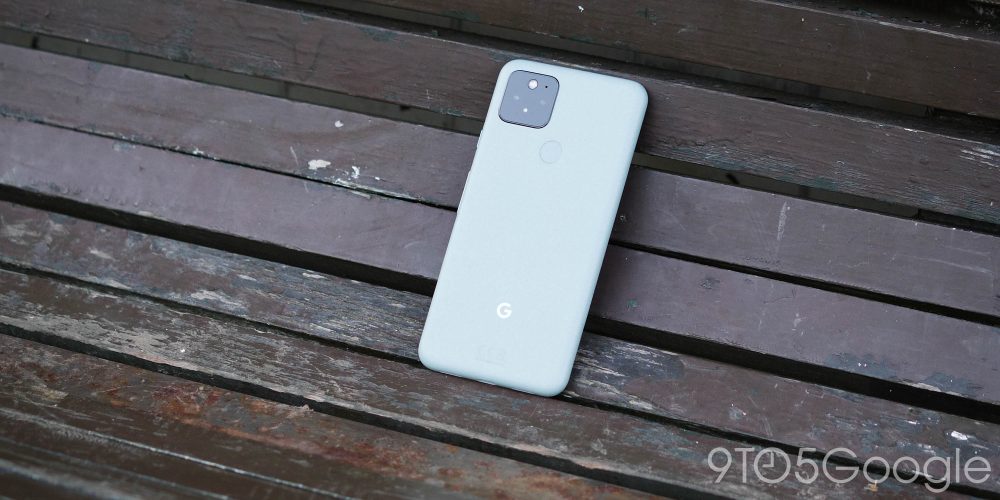
The return to an aluminum chassis is tempered as the Pixel 5 comes with what Google calls a “bio-resin” finish. In reality, it just feels like soft, textured plastic — albeit a little more textured and spongey. Without a case, it’s still pretty grippy, which is always a complaint on glass-backed devices. A chassis cut-out allows the device to be wirelessly charged, so no worries about your Pixel Stand becoming defunct.
We’ve already seen complaints about the unibody design but, luckily, those problems do not appear to be too widespread to be a major concern to anyone looking to pick this smartphone up. The softer curves make the package feel even more compact with no detriment to the rest of the design either. I’m lamenting the removal of Active Edge as I used it daily, but maybe it might return on a future device? A man can hope.
Display
Slick and smooth
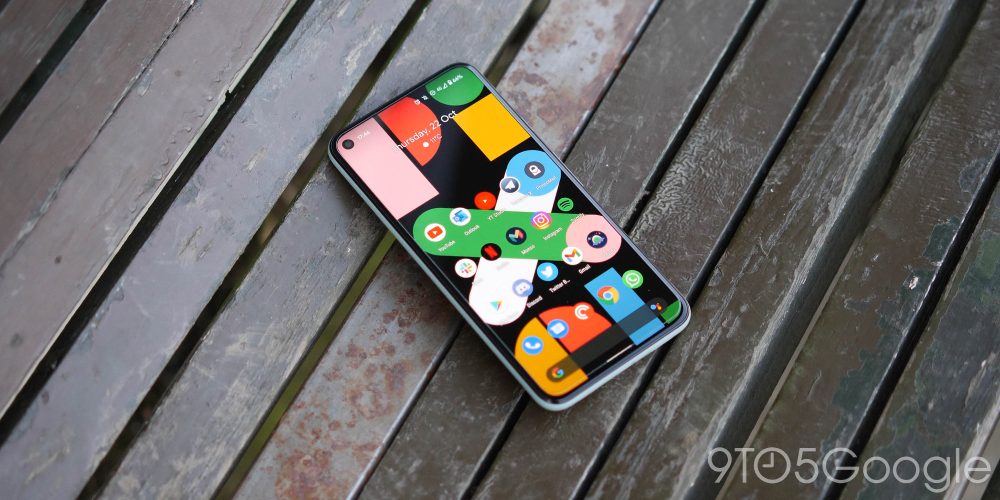
The retention of the 90Hz refresh rate is one that really helps elevate the Pixel 5 package above many similarly-priced rivals, as the software helps ensure this is slicker and sleeker than the competition. As more devices are now coming with higher refresh rate panels, apps have also been updated to take advantage of them. This means that even though a dynamic refresh rate is enabled out of the box, slowdowns are far less obvious than they were when the Pixel 4 series launched.
Taking a bump down to FHD+ is also one that, realistically, makes almost no outright noticeable difference on a smartphone screen of this size. Sure, a QHD+ display is a nice bonus, but this is a fine OLED panel that looks sharp, clear, and crisp from all angles. Colors are superb, while viewing angles are similarly excellent. As I mentioned during our initial first impressions, the uniform bezels are a genuine godsend. How has it taken this long for an Android device to come with properly uniform bezels on all sides?
The only gripe I have with the display is the brightness levels. Like we saw with the Pixel 4 series last year, it’s just not quite as bright as some of the competition — even though it looks substantially better in most cases. Is it bright enough? For most people, I’d argue that it is.
Software and performance
No major slowdowns

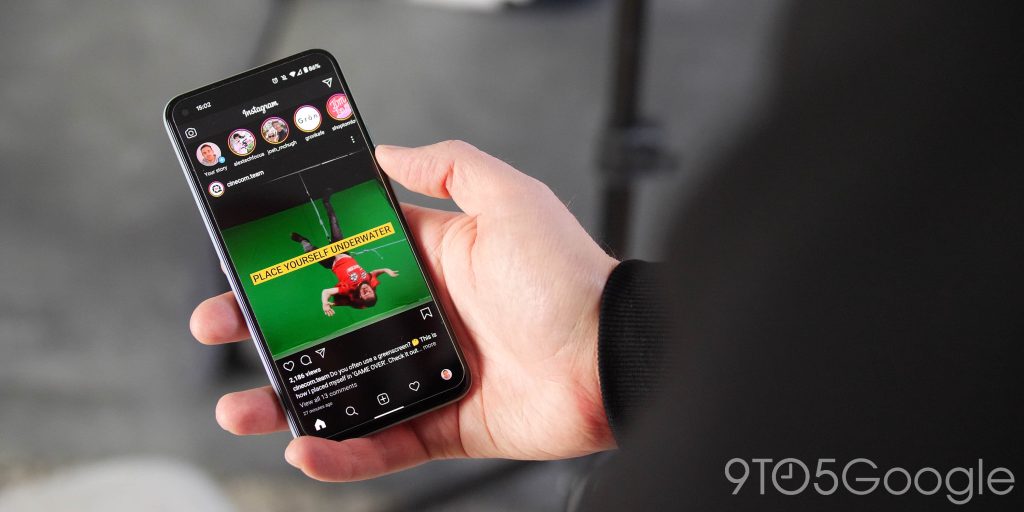
Let’s address the Qualcomm Snapdragon 765G chipset first. In terms of benchmarks and raw performance, the 765G is more or less on par with the Qualcomm Snapdragon 845 chipset found in the Pixel 3 series. From the outset, this isn’t a good look but such is the exorbitant 5G tax applied to the current flagship Qualcomm chips, this might be somewhat of a blessing in disguise.
That would be an empty platitude if the performance were deemed “poor.” Luckily, the Snapdragon 765G (plus 8GB of RAM) is absolutely fine for what we’d call “general” usage — which accounts for about 99.9% of people. I’ve yet to run into any noticeable slowdowns that ruin the fluid Android 11 experience.
If you come from a device with faster storage and a more powerful processor and faster UFS 3.0 storage – rather than UFS 2.1 – then you will likely notice millisecond load extensions here and there. This is remedied with the 90Hz refresh rate in almost all areas, but if you come from an older Pixel device or lower-end hardware, it’s almost impossible to tell.
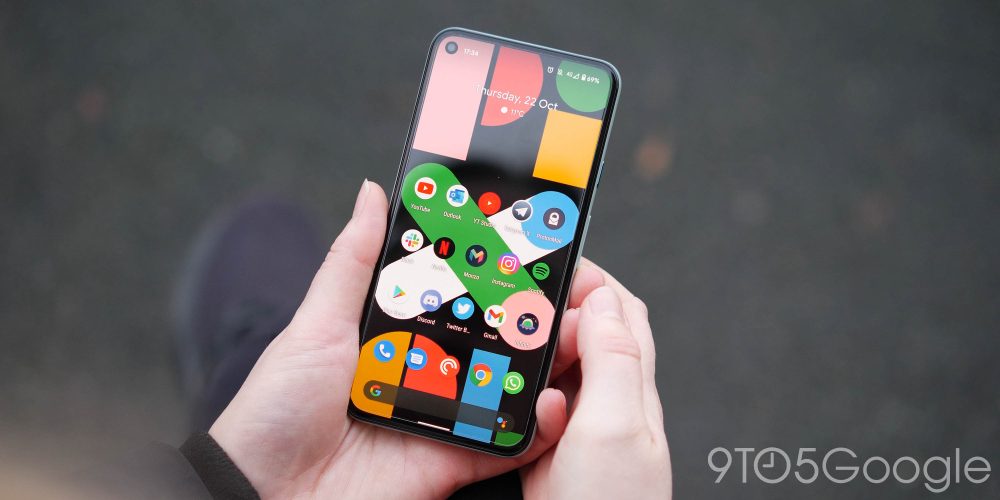
Being completely honest for a moment, if you switch from flagship to flagship, you’ll see some slowdowns here and there. Is it enough to break the experience? For me, no. The Pixel 5 runs absolutely fine. I personally see no differences when playing Call of Duty Mobile on the Pixel 5 versus the Pixel 4 XL. Should you be using video editing apps like Adobe Premiere Rush, then you might see some differences in timeline exports but it will be seconds rather than minutes.
We’ve done a much deeper dive into some of our top Pixel 5 features and Android 11 that will discuss much of the “main” software experience a little better but the differences between older Android versions are far less pronounced this time around.
There are a few new inclusions such as Hold for Me, which utilize the Google Assistant to automatically hold the line when calling toll-free numbers. Unfortunately, it isn’t available outside the US, which means I’m missing out.
Battery
Finally, all-day endurance

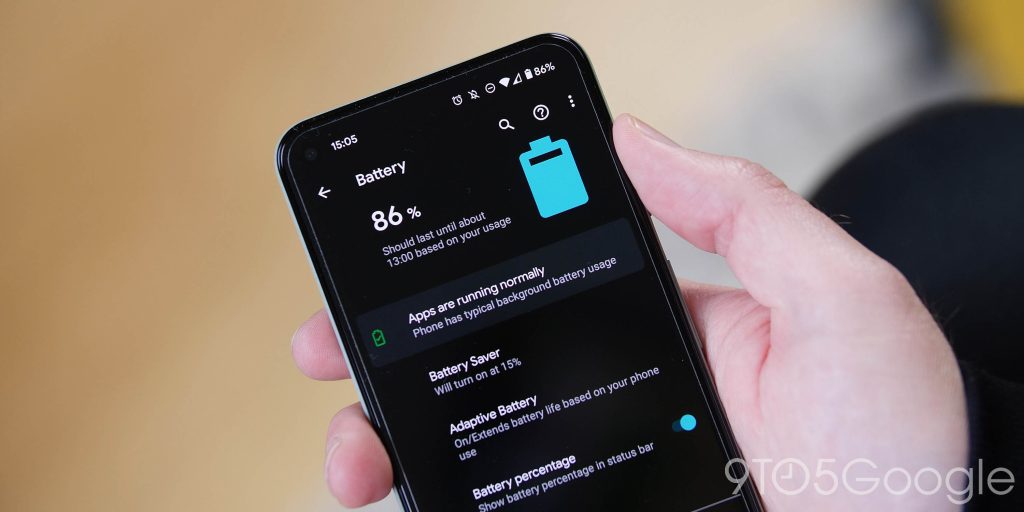
The biggest complaint with last year’s Pixel devices was the poor battery life at launch. Credit where it’s due though, Google has improved things with software updates. Software can only go so far, so the all-important upgrade to the Pixel 5 series had to be the battery size.
I’m pleased to confirm that the Pixel 5 battery delivers in spades. Due to a weird manufacturing glitch, the internal cell can range from 4,000 to 4,080mAh. This is about the baseline for a flagship smartphone at this stage of 2020 but given the Adaptive Battery tweaks, lower-resolution display, and more modest chipset, it’s a winning combination.
I’ve regularly seen way above 5 hours of screen-on time each day with plenty of headroom to spare. In some cases, I’ll head to bed with 35-40% battery life remaining. That is with the 90Hz refresh rate forced in Developer options, plenty of Bluetooth usage, and the display set to around 65% brightness. With a tweak here and there, I’m almost certain you could achieve 10+ hours of screen-on time on the Pixel 5.
Personally, I won’t lament the 18W charge speeds, as I will just stick my Pixel 5 on a Qi charger overnight. It would have been nice to see 30W charging though, as a quick top-up without having to wait is always a nice option.
Camera
Brand new perspectives

Throughout my time with the Pixel 5, the camera has been an interestingly different experience than previous flagship Google devices. Images are still pretty much superb but the camera “magic” that Pixels are known for is starting to wane as the rest of the industry catches up. But I will say that even despite this, I still prefer the images out of this device in nine out of 10 cases over the competition.
One of the biggest strengths is undoubtedly the ability to just point, shoot, and nail the look and feel of a scene with little to no effort. It’s why I insist on carrying a Pixel device with me wherever possible. The Pixel 5 is no different this time around. Add in the new ultra-wide-angle lens that has long been requested, and while it is especially late to the party, it’s a great setup that is complemented well by a selfie camera that is equally capable.
Google has executed the ultra-wide-angle lens especially well. Good optics with the backing of arguably the best post-processing in the mobile space ensure that details are retained throughout an image. There is no vignetting or major softness towards the fringes of images — which is my own personal gripe with ultra-wide shots in general. Another important thing to note is the consistency of each lens color-cast when switching focal lengths.




Tones remain identical between the main wide and ultra-wide lenses, ensuring that no matter what focal length you want to shoot at the results are typically and consistently “Pixel.” Another notable is that when in the camera UI, switching between focal lengths is smooth and consistent — something often overlooked by other OEMs.
I’m personally puzzled by the lack of a dedicated telephoto lens, but it’s clear that Google is opting to “fix it in post” with the impressive Super Res Zoom. I can personally deal with this as often Super Res Zoom does better than some 3x telephoto lenses once an image is processed. Next year though getting a triple camera setup should really be a priority on the Pixel 6 series.
When taking selfies, you’ll see sharp, clear images but while the results are good, I have found edge detection for the front-facing portrait mode a little less accurate than on the Pixel 4 series. I’m not sure if this is related to the Soli tech or if it’s just anecdotal. However, like the rear camera setup, the front-facing camera nails the shot most of the time.




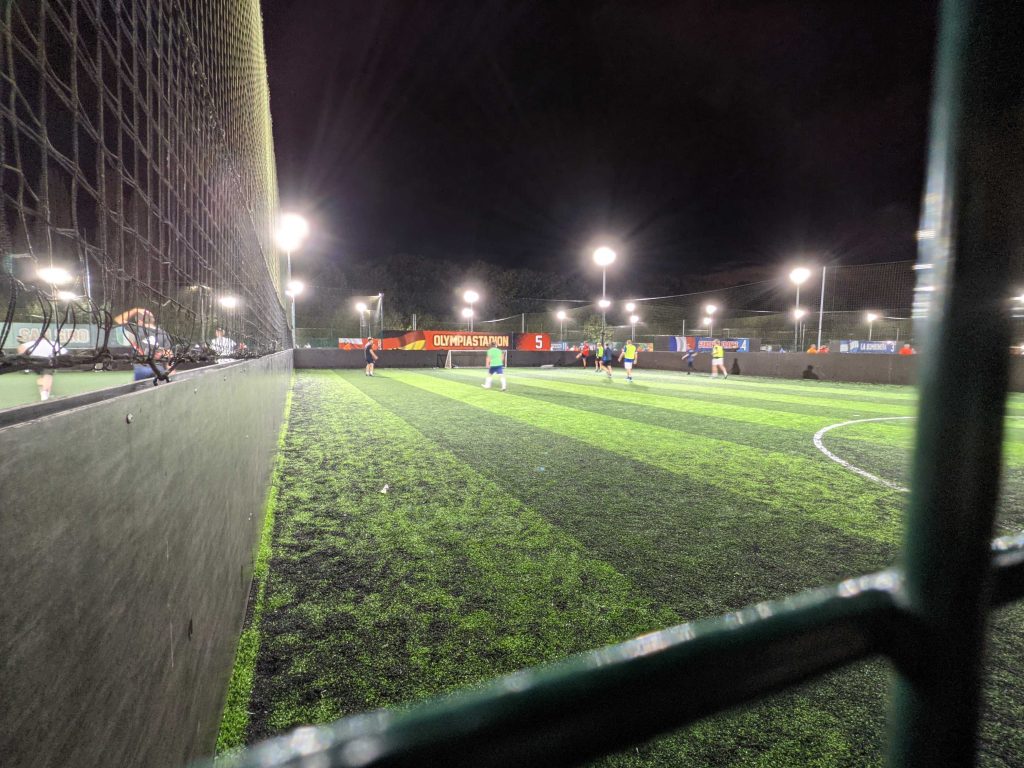
One of the most notable differences in images taken with the Pixel 5 is the processing times after you press the shutter button and head to the preview pane. Will you complain about a couple of second of processing before seeing the results though? We’d imagine no.
For reference an image on the Pixel 4 will process within 1 second, the same scene and image on Pixel 5 will take 1.5 to 2 seconds. It’s up to you if you think this is a dealbreaker or not.
Another major point of contention though is the now aging Sony IMX 363 12.2-megapixel sensor. It’s starting to become apparent that the team behind the Pixel 5 camera is starting to hit roadblocks. Let’s hope next year that Google decides to at least bump to a newer camera sensor to ensure it remains ahead of the chasing pack.
But putting that into context for a second, Google is still doing marvelous work with a 4-year-old sensor. If that is impressive, just imagine what could be done with arguably better camera hardware.
Video
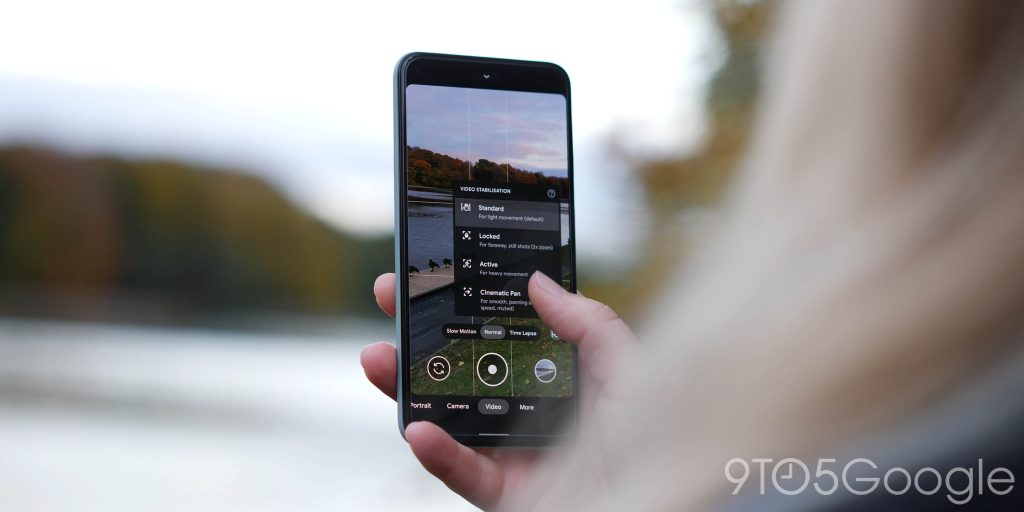
As someone who generally shoots video every single day with a dedicated camera, the modes on most mobile devices always end up feeling lackluster to me. But as an edge-case, I understand the importance of good mobile video probably more than most — especially for those point-and-shoot important family moments.
The Pixel 5 has stepped up to the plate with video this year with some added video options including Cinematic Pan, Locked focus, and Active modes. I feel the most interesting and useful to most people will be the “Locked” mode, as this snaps on to a subject when zoomed in. I can think of hundreds of examples where this will be helpful like at graduation ceremonies, family weddings, and just generally being a tourist.
4K 60fps is available natively for the first time, and the results are pretty impressive, to say the least. I still feel that Samsung’s flagships have the edge on the Pixel 5 in terms of sheer video quality, but the exposure, colors, and consistency are exceptional here too.
Let’s quickly talk about the standard stabilization first though before we dig into the other modes. This is where the biggest boosts have been made to the video. The combination of OIS and EIS makes for super-smooth 4K 60fps video — or any video for that matter.


There is even an “Active” mode aims to mimic the stability offered on an action camera such as the GoPro. In my experience, it works well enough, especially when pushed hard. I just can’t really see a use-case for it in my daily life, all-action go-getters might find a way to take advantage though.
For wannabe videographers, Cinematic Pan will be a popular new addition. It works by slowing motion down using a higher framerate so that pans are smoother and more consistent. The end result is fantastic for a smartphone, especially factoring in that you’ll do this handheld.
Video on the Pixel 5 is better than adequate for the first time in a while — especially if you want to go beyond just “point and shoot.”
Fingerprint reader
Mask-friendly device security

Even 10 months ago, the idea that a global pandemic would effectively change the way we access our devices would be laughed off. Face Unlock was one of the “big” inclusions to the Pixel 4 series, but after less than a year Google pulled the plug. Cue uproar. But, in somewhat of a stroke of luck, COVID-19 means that mask wear is now almost commonplace — rendering Face Unlock almost useless in public spaces.
The return of a rear capacitive fingerprint scanner is, therefore, one that might feel like a step back but works exceptionally in a post-COVID landscape. It’s fast, fluid, and perfectly placed. It would have been awesome to get an in-display reader — and maybe we’ll eventually get one — but for now, it’s a really sensible return.
Speakers
Good but not great
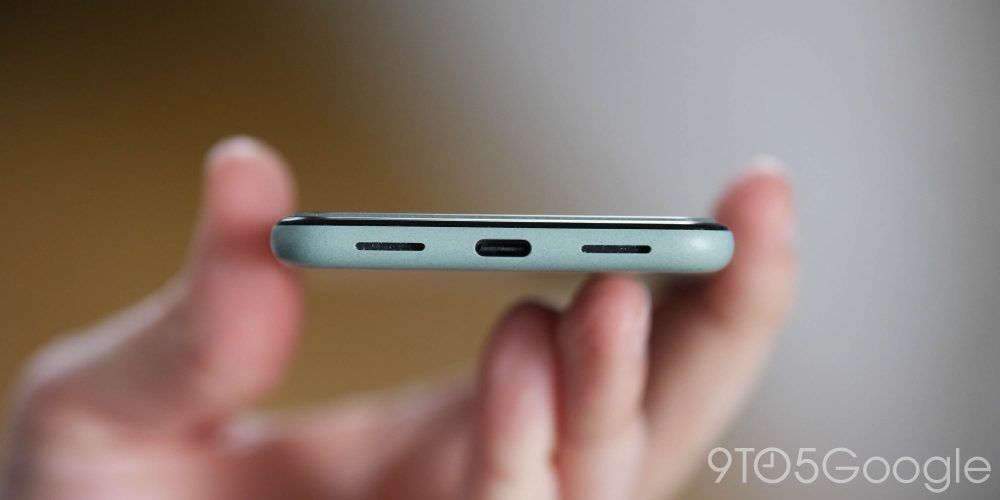
There are two downward-firing speakers on the Pixel 5 but in conjunction with a vibrating display, you’ll get stereo audio. It works reasonably well but there is a distinct lack of bass and the maximum volume is a little lower than many other smartphones. That said, the Pixel 5 speakers are really clear and crisp, even when taking calls — which was a worry ahead of time.
Haptics
Get ready to rumble

#This is one area where I think there is a noticeable downgrade over the Pixel 3 and Pixel 4 series. Whereas the Pixel 4 had a full-bodied vibration when tapping and prodding, the Pixel 5 feels slightly more hollow, and the haptics happen to be very close — if not identical — to that of the Pixel 4a. The haptics are still very good, but they are an unfortunate step down over the Pixel 4.
5G
Where my G’s at?
Add one more “G” to 4G and you’ve got 5G, it’s that simple. In reality, 5G is a bit of an enigma at this stage of 2020. The rollout continues globally, and I’ve seen some utterly spectacular speeds on my modest travels around the UK. Heck, I have 5G where I live but I still think it’s not a reason to get excited for a device touting it as a major feature.
It’s really neat that you get support for connecting to ultra-fast networks, but it should never be the sole reason you are looking to upgrade.
Is the Pixel 5 worth it?
Striking the ‘right’ balance but with ‘certain’ compromises


The inherent excitement of the Pixel series has almost always been about the software. Hardware has always — and unfortunately — felt or been treated very much like a second-class citizen but by lowering expectations, Google has managed to provide both in a package that makes some sense at its proposed price-point.
As with all Pixels prior, with the Pixel 5, it might not always be the device you’re buying now. It’s the potential and device you’ll have in 12 months’ time that is the value proposition here. It’s still one of the most unique ways of tackling the smartphone market, as Android develops, so too does your smartphone experience.
2019’s Pixel 3a series has proven to be one of the best examples of this. Google saw that an affordable alternative was necessary in a packed market. While it’s always nice to have the best specifications and internals, they come at a cost. With so much competition at the top-end of the market, the Pixel 5 still manages a little taster of everything without massively piling on the price.
Yes, it could arguably be a little cheaper and a little more powerful but it strikes a perfect balance for most people out there. For ardent Pixel enthusiasts, this is probably not the smartphone you were hoping or wishing for. It’s definitely not the most powerful, nor is it the most outright feature-packed. In some areas, there is obvious hardware backtracking as Google continues to try and find a foothold in an increasingly competitive and saturated market.
Instead, it’s a Google Pixel that comes with just enough compromises to make it a solid option for the “average” buyer. In the US, it does feel a tad overpriced but still, is an overall solid device that manages to fix some previous Pixel-specific gripes. In Europe, with incentives and gifts, it’s almost a steal — and on top of that, a solid smartphone to boot. If you’re a hardcore Pixel fan — especially Pixel 4 XL owners — we’d have to say that this might be the first outright skippable flagship Google phone for some time.
For real spec heads the Samsung Galaxy S20 FE is definitely more catered towards you. Those just wanting a good software experience that lasts all day and does everything pretty darn well, then the Pixel 5 provides just enough to be a relatively solid buy.
The Pixel 5 is available direct from Google, Amazon, Best Buy, Verizon, B&HPhoto, AT&T, plus more.
FTC: We use income earning auto affiliate links. More.

Comments